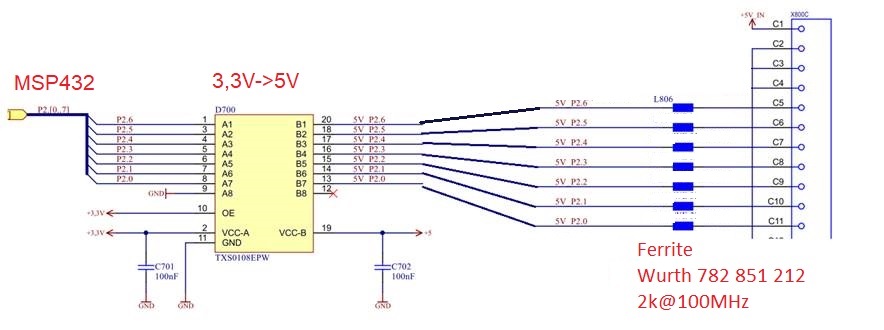Other Parts Discussed in Thread: SN74LVC8T245
Hi,
we use the TXB0108 buffer for some 3,3V->5V bi-dir GPIOs. Currently the MSP432 drives the line to the TXB0108. The TXB0108 translates it to 5V with no problems at an open connector.
There is a series ferrite bead in the line at the connector. However, if I connect the output to an input pin of the board (74LVC541), the output of the TXB0108 starts oscillation. Our test pattern is 1Hz toggling low-high.
I know that >70pF of capacitance can get the TXS/TXB to oscillation, but it don't think that we're that close to it. If the ferrite bead is bridged by a soldering wire, everything is fine.
Can the phase shift of the ferrite bead be the reason? Any other thoughts?
Thanks,
Gunther



